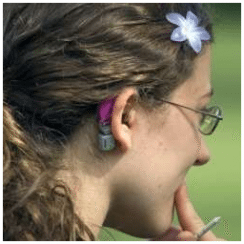If a student who is deaf is using an interpreter, group members will need to take turns during discussions. If several people are talking at the same time, which is not uncommon in youth group meetings, the interpreter will be unable to communicate all the information.
Requiring people to raise their hands before speaking is a good method to ensure that only one person is speaking at a time, as decided beforehand the order in which students will speak. In a group setting the student who is deaf will normally be a few seconds or minutes behind the hearing group members; it will usually take longer to interpret a sentence that it took for the person to speak it. An interpreter must understand the context before interpreting and it may happen that a message will require more signs than words.
The youth leader should make a point of asking students who are dear for their responses and questions to ensure they are included in the discussion. If a group lasts more than an hour, two interpreters may be necessary, because interpreting can be very fatiguing.
Not all individuals who are deaf are fluent in sign language, and some, such as a student who is deaf and blind, may have some very particular communication needs.You can learn about these accommodations simply by talking to the student or their family.
Other considerations:
- Lighting is important when there is a person who is deaf in a ministry program. Lighting needs to be sufficient for the person who is deaf to see the interpreter, especially during a movie or video clip when the lights need to be dimmed.
- Blinds or curtains might need to be closed to minimize glare and enable the person who is deaf to see their interpreter.

